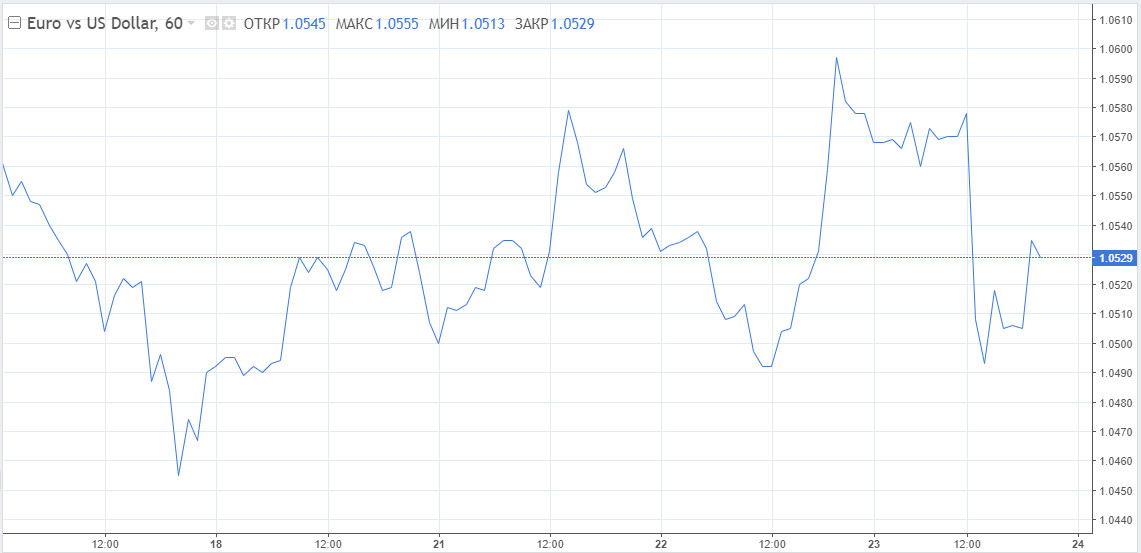
The euro rally subsided again as EUR/USD approached 1.0600. Markets are focused on data on business activity in the US and the euro area. The new figures suggest a rapid slowdown in the bloc's economy ahead of the European Central Bank's promised rate hike in July and again in September.
The index of business activity in the manufacturing sector of the eurozone showed a slowdown to 52 in June from 54.6 in May. The consensus suggested a level of 53.9.
The deteriorating macroeconomic picture may give signals to market players that they will not immediately raise rates by 50 bp at any of the aforementioned meetings. Obviously, such a sharp rise will quickly push the eurozone into recession. All this puts pressure on the euro, which has recently begun to show signs of life on the promises of the ECB to start fighting inflation in a monetary way, like other major global central banks.
Currency strategists say the ECB has missed the mark on recent signals of a possible 50bp rate hike. Opportunities for such a move are rapidly closing as the economy slides into recession without tightening monetary policy. The central bank has at least two or three meetings in order to somehow influence the accelerating inflation. Ideally, it would be a move to increase by 50 bp in July with very mild messages going forward.
In response to the disappointing reports, German bond yields fell sharply, while the assessment of the ECB's policy became significantly softer. Markets are expecting a rate hike of around 15bp.
According to latest reports, economic growth in the euro area has deteriorated sharply to a 16-month low in June, reflecting a halt in demand growth.
Industrial output in the euro area contracted for the first time in two years, and service sector growth slowed significantly, especially in consumer services. Business expectations for next year's output also fell to their lowest level since October 2020.
Economists attribute both the stagnation of demand and the deterioration of prospects to rising prices or the high cost of living. Although price pressure remains elevated, there are still signs of a slowdown in prices for the third consecutive month. Analysts do not rule out a possible peak in inflation now.
Given the new data, members of the ECB will wonder whether it is optimal to raise interest rates during a rapid slowdown in activity and peak inflation. The revision of the ECB's rate expectations may put pressure on the euro in the future, other things being equal.
The bloc's business expectations and new business inflows were particularly weak. This indicates that further deterioration is likely to occur in the coming months.
Serious concerns about the direction in which the eurozone economy is heading are not unfounded. Experts at the beginning of this week adjusted their expectations for the euro area. Whereas earlier a recession was seen as a growing risk, now it is the new baseline scenario for the eurozone.
Short-term technical picture of the euro
The EUR/USD pair has initial resistance at 1.0600, followed by 1.0650. Support is located at 1.0450 and 1.0400.

The bears have deployed three consecutive daily retracements. Thus, the reduction of the quote in the short term looks convincing. While the 1.0690-1.0700 area limits upside potential, more pullbacks are possible. The next important mark is at the June low at 1.0358. The May low is 1.0348. Testing these marks is quite possible in the near future.
Bearish sentiment is expected to prevail on the long term as long as the pair trades below 1.1142.
 English
English 
 Русский
Русский Bahasa Indonesia
Bahasa Indonesia Bahasa Malay
Bahasa Malay ไทย
ไทย Español
Español Deutsch
Deutsch Български
Български Français
Français Tiếng Việt
Tiếng Việt 中文
中文 বাংলা
বাংলা हिन्दी
हिन्दी Čeština
Čeština Українська
Українська Română
Română

